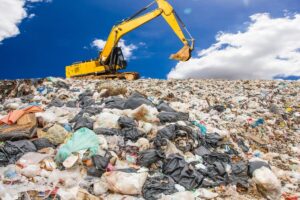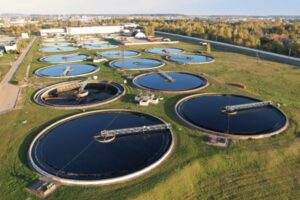Municipal wastewater treatment plants face the ongoing challenge of managing sewage sludge, a significant byproduct of the water purification process. Innovative technologies like Hydrothermal Liquefaction (HTL) are emerging as promising solutions, transforming this waste stream into valuable renewable resources. While Clean Stream Fuels is at the forefront of deploying this technology, several real-world examples highlight the potential of HTL in municipal settings.
Pioneering HTL Projects in Municipal Wastewater Treatment
Several research institutions and pilot projects around the world have demonstrated the feasibility and benefits of using HTL to process sewage sludge:
- The University of Utah’s работы: Researchers at the University of Utah have conducted extensive studies on using HTL to convert wastewater sludge into biocrude. Their findings have shown significant biocrude yields and a substantial reduction in sludge volume, highlighting the potential for energy recovery and decreased disposal costs.
- European Pilot Programs: Various European initiatives have explored HTL for sludge treatment, focusing on optimizing the process for different sludge compositions and evaluating the quality of the produced biocrude for downstream processing into transportation fuels or other valuable chemicals.
- Demonstration Plants: While large-scale commercial deployments are still evolving, several demonstration plants have been established to refine the technology and showcase its viability for municipal applications. These projects often focus on energy efficiency and the quality of the output products.
Benefits Observed in HTL Municipal Applications
These real-world explorations of HTL in municipal settings have consistently pointed towards several key advantages, aligning with Clean Stream Fuels’ vision:
- Significant Sludge Volume Reduction: HTL can reduce the mass of sludge requiring disposal by 50-70%, leading to substantial savings in transportation and landfill fees.
- Renewable Energy Production: The biocrude produced offers a pathway to generate renewable energy, potentially offsetting the energy consumption of the wastewater treatment plant or providing a new revenue stream.
- Nutrient Recovery Potential: The aqueous phase byproduct of HTL contains valuable nutrients that can be recovered and used as fertilizers, further contributing to a circular economy approach.
- Reduced Greenhouse Gas Emissions: By diverting sludge from landfills and producing biofuels, HTL can contribute to a lower overall carbon footprint for municipal wastewater management.
Looking Towards a Sustainable Future
The growing body of research and pilot projects demonstrates the significant potential of HTL as a sustainable solution for municipal sewage sludge management. Clean Stream Fuels is building upon this knowledge to offer advanced and efficient HTL systems tailored to the specific needs of water treatment centers. To explore how our technology can help your municipality turn a waste challenge into a valuable opportunity, please contact our team.
#HTL #SewageSludge #MunicipalWastewater #Biofuel #WasteToEnergy



